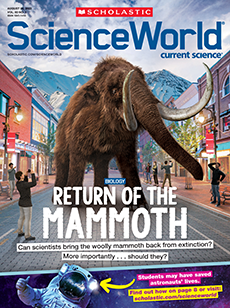This fleshy mass may not look like a squid, but that’s exactly what it is—just squashed into a block. It was caught in the waters off New Zealand by researchers tracking fish populations. The scientists wanted to preserve the tentacled creature. So they decided to fold it into a 50 liter (13 gallon) bin and put it in a freezer.
Kat Bolstad was thrilled when the specimen arrived at her lab. She’s a teuthologist—a scientist who studies cephalopods—at Auckland University of Technology in New Zealand. Cephalopods are a class of marine animals that include squid and octopuses. Giant squid usually live more than 200 meters (660 feet) below the ocean’s surface, so it’s rare for humans to see one—let alone catch one.
Bolstad and her team let the “squidsicle” defrost and unfurl, which took about a day. Then they examined it. The scientists determined that the specimen was a young female that measured about 7 m (23 ft) long. Bolstad’s group also found about 4 L (1 gal) of food in the squid’s stomach, including the remains of a smaller squid and a fish.
By the end of the second day, the squid was starting to decay and smell. Now the squid has been preserved in alcohol at the Museum of New Zealand Te Papa Tongarewa so scientists can study it further. “There is always a chance that a new specimen will tell us something we never knew,” says Bolstad.
